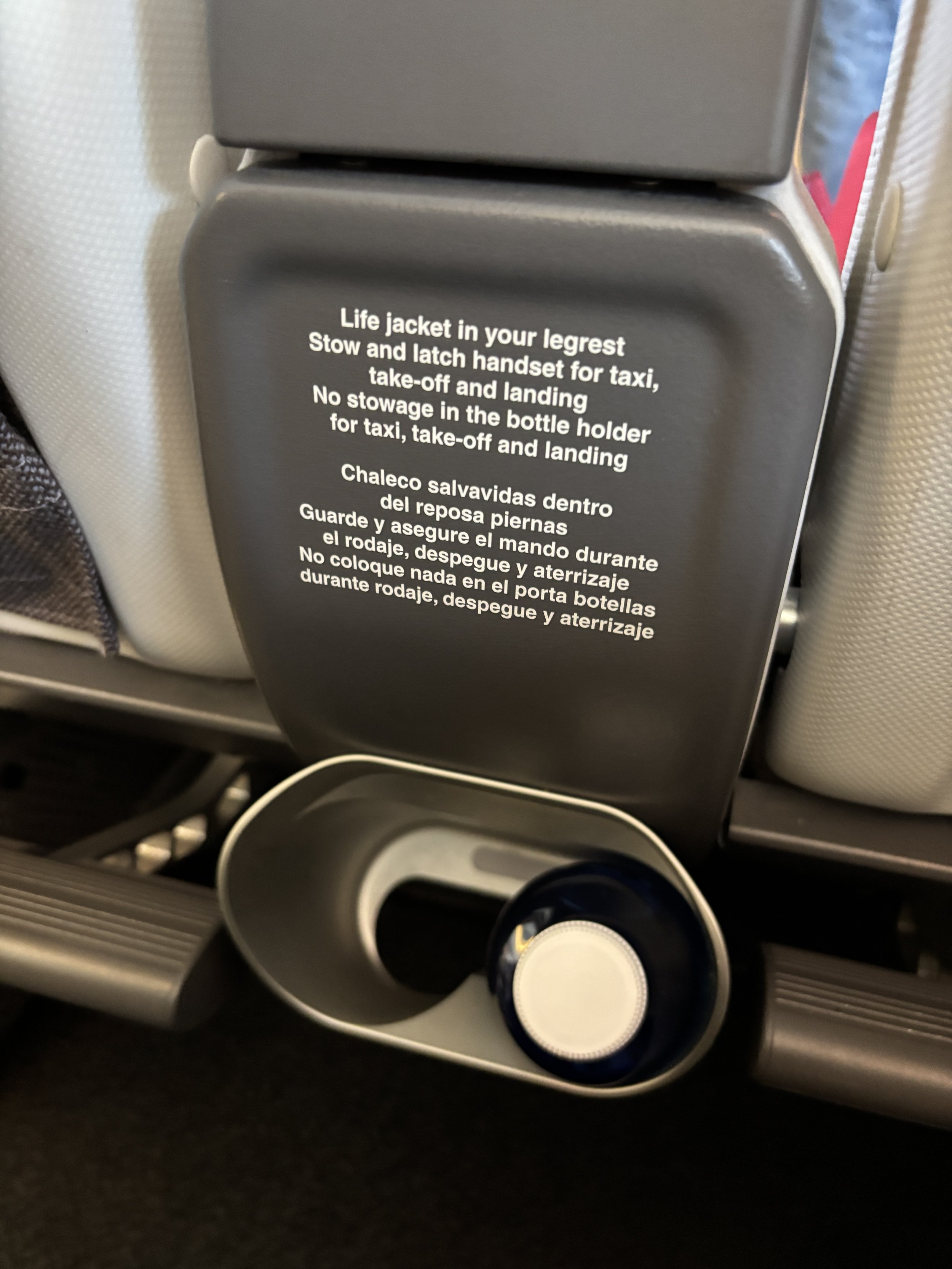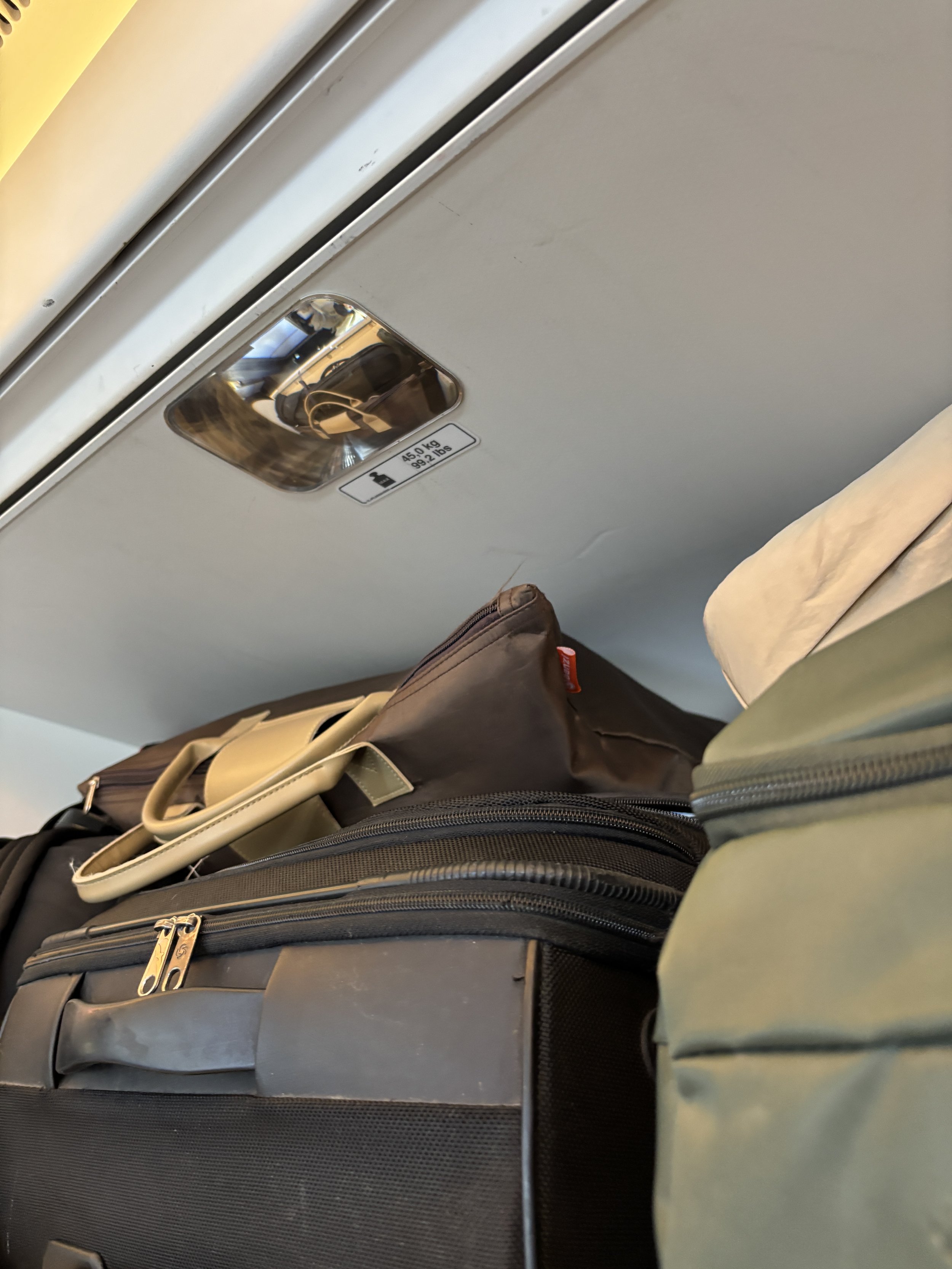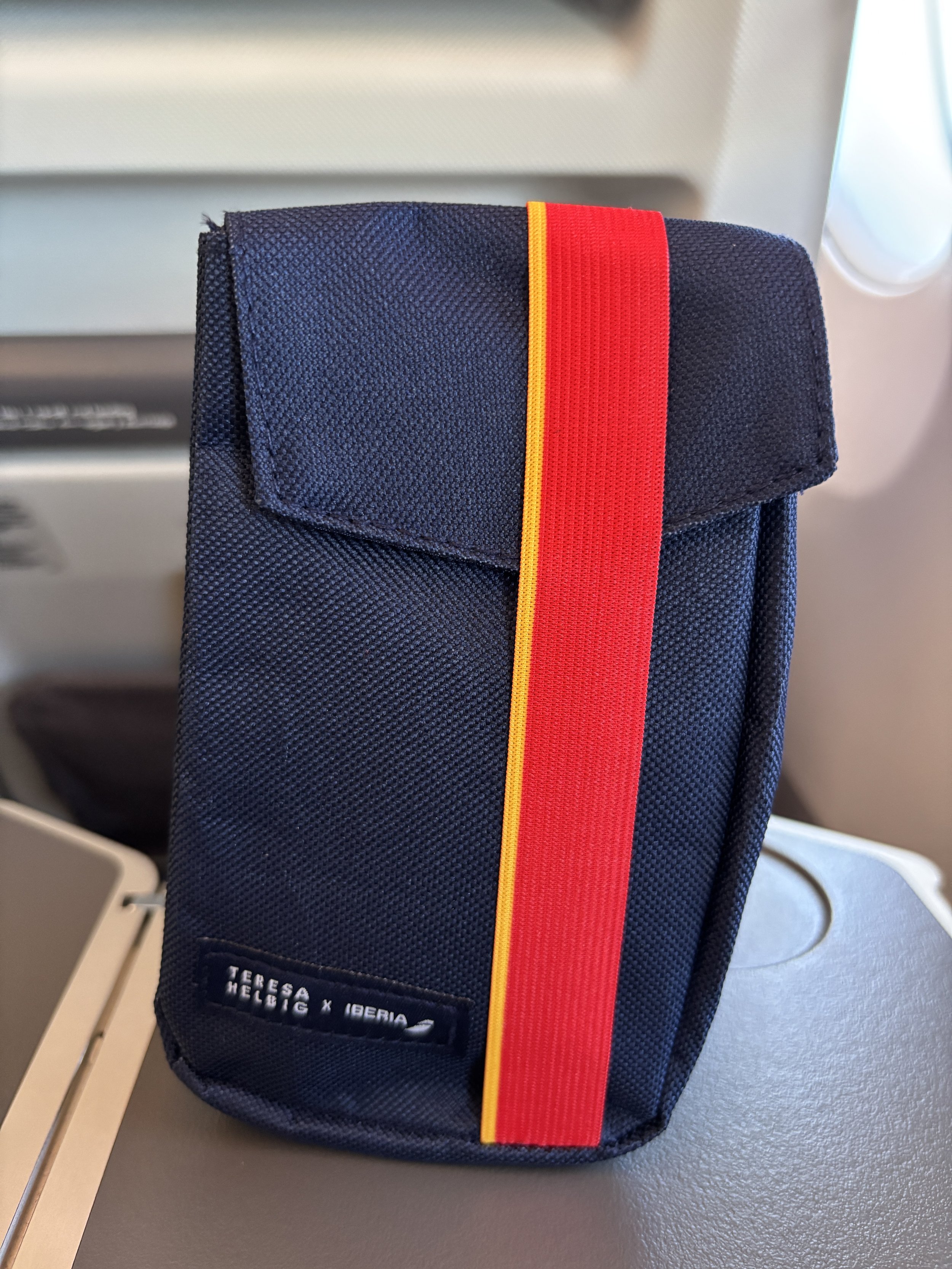Flight Review: 16 hours on Iberia's Premium Economy A350 (NRT-MAD)
Flight#: IB282
From: Tokyo-Narita (NRT)
To: Madrid-Barajas (MAD)
Flight time: 15h 30min
Aircraft: Airbus A350-900
This was my longest flight ever, by far. In normal times it wouldn’t take that long to fly from Tokyo to Spain, but the closure of Russian airspace means that this flight has to take quite a detour over Alaska, northern Canada and Greenland before approaching Europe by way of Iceland and Ireland. All in all, quite an adventure for a flight reviewer!
Anecdotally, this routing meant also that I completed a whole tour around the world, since this was the last leg of a trip that had taken me eastwards from Europe and onto Kazakhstan, Korea and, of course, Japan.
This was also a great opportunity to try out yet another Premium Economy product (you can check also my ITA Airway’s Premium Economy flight review), which is a type of service class that, while gaining widespread adoption, is still niche to some degree.
The flight was courtesy of Iberia.
Iberia’s Premium Economy cabin
So, after a rather smooth and uneventful online check-in, it was time to board and experience what would become “home” for a full and, nearly endless, day (despite the many hours airborne, since we were flying eastwards all the time, it never got dark!)
Iberia operates its A350-900s in a three class configuration with Business, Premium Economy and Economy class cabins.
The Premium Economy section is located at the front of the economy class cabin and it is only partly from it. You can see in the right hand picture below how there is a sort of wall marking the boundary between the two zones, but it is not really a super hard divide.
This small Premium Economy class section is fitted with 8 seats in 2-2 layout on each side of the aisle and a central part with two rows of four seats abreas, for a total of 24 seats.
The seat is, of course, one of the key differential elements in Premium Economy when compared to the rest of the economy class cabin. Iberia offers its premium economy passengers a full six inches extra of pitch (something really welcome in an ultra-long haul flight!).
The seat reclines also to a considerable degree and the lower part of the seat can also be brought up to act as a leg rest. There is a foot rest too. So, while it is far from a lie-flat seat, you can actually stretch yourself quite a lot.
Here Bbelow you can see the seat at its maximum angle of recline, with the leg rest up and the foot rest in front, down.
As you can see, the seat is joined to the neighbouring one by a wide, solid arm rest, which serves also as a little table to hold drinks and other stuff. On this flight the seat next to me was empty, so I was able to use it fully.
Other details of the seat, below to the left you can see the two buttons to control de recline and leg rest as well as the seat and secondary screen controls (the latter is not really needed since it’s a touch screen). Also the coat hanger on the right side of the seat.
Seats are fitted with power outlets and USB ports. One interesting element that caught my attention, because it is the first time I see it: in addition to the customary literature pouch, you can also find a metal bottle holder in front of you (in the space between the two adjacent seats).
And, finally, another tiny detail: the small mirror which lets you peak into the overhead bin.
Each passenger on Iberia’s Premium Economy is given this set of headphones, pretty good and solid, as well as the customary blanket at pillow (common to all classes of service).
One interesting thing about Iberia’s blanket is that it comes wrapped with a QR code that you can scan to get more info about the services available onboard (more of this soon in the section about the IFE system). It’s a small thing, but I think it is nice that you can get an overview of what to expect on the flight ahead just from the start.
When it comes to the amenity kit, we got this cool-looking, colourful little bag. Inside you can find a pair of socks, a sleeping mask, a dental kit and earplugs (by the way, this amenity kit is specific to Iberia’s Premium Economy, Business Class passengers get a slightly different one, although to be honest, not sure which one is best design-wise!).
Inflight entertainment (IFE)
I think this is one of the strongest points of the whole Iberia long haul experience: the content platform is really good, with plenty of current and classical movies. And the 12” touch screen is very responsive and easy to navigate.
Iberia has also one of those artistic safety videos that have become popular among many airlines. In this case, showing Spanish top performers in several professional and creative disciplines and set in different iconic locations across Spain. Always cool to see those.
Also, and as mentioned earlier, I liked the fact a short video is played providing an overview of what to expect in terms of service during the flight.
If Iberia’s extensive content library is not enough for you (hey! we’re talking about a super long flight, after all!) you can also go online.
Iberia offers internet connectivity on its A350-900 flights, although as you can see below, level is tiered. Basically you can use messaging apps if you are on Business or an Iberia Plus member (sadly, not if you are on any other IAG loyalty program, like BA Executive Club, this is perhaps something IAG could fix in the future).
It is possible to get more broadband is you wish to surf the internet, but for a fee.
Also, reminder that Iberia has a pretty good inflight magazine, a classic of the industry called “Ronda”, but nowadays this is 100% online and you can access it also via the seatback screen.
And, of course, with such a “special” routing, checking the interactive flight map every now and then was also a must (the red arrows depicting the itinerary have been added by me).
Food and drink
There were three “organized” meal services during the flight, or rather two and a half, since one of them was actually a sandwich, not a full meal service with the cutlery and all that.
And when I say “organized” is because during the flight Iberia runs a sort of “open pantry” policy. This is not exclusive of business or premium economy. Since the flight is so long, all passengers are able to stand up (provided the belt sign is not on) and go to the galley to get snacks or a drink at any time during the flight. More on this shortly.
You can get an idea of what’s in each of the meals on the menus depicted here above, although I must say this was not exactly what we got served, because, as crew explained to me, there had been a glitch and the printed menus that were loaded into the aircraft didn’t match what the catering provider had finally delivered.
Note that there is also a Japanese version (Iberia goes the extra mile in catering to the local market and, actually, has a number of Japanese-speaking crew members always on the Tokyo flights!).
Iberia has also this service called “gastrobar”, which is essentially an on-demand service, BUT this is not available on the Tokyo flight, since there is the open pantry system that I mentioned earlier (and which unlike the gastrobar, is free of charge).
So, we had the following meals:
First, shortly after take off (it was midday local time), a main (with a choice of meat with potatoes or pasta plus cus-cus and a mousse as dessert).
Mid-flight, a sandwich (with a choice of chicken teriyaki or a vegetarian option) with chocolates and a drink.
Shortly before arrival, a breakfast (it was evening local time, but early morning in Japan), which consisted in a kiche-type omelette, with some potato cakes and chocolates.
Above you can find the main meal. We were also offered drinks and snacks at different times during the flight.
What I found most interesting was the open pantry, around-the-clock option. The choice of snacks is somehow limited to three types (palmiers, chocolate cookies and savoury snacks), but it is nice to be able to get up at any time to nib something (something other airlines do, but just in business and first). It was also possible to get drinks.
Below is a close-up of the teriyaki chicken sandwich, which was pretty tasty.
And, last but not least, breakfast. As you can see in the screen, by that time we were already in the final stretch of our flight, closing in on the Spanish coast.
And I left what is perhaps the most important element for the last: the service onboard was absolutely excellent.
I mentioned earlier how Iberia takes this as seriously as to go the extra mile of having always Japanese-speaking crew on their flights to and from Japan (I think Finnair is another airline with a similar policy). But, the personal attention was also great throughout the flight (special mention to crew member Gracia, who was taking care of our Premium Economy area).
This is always an underrated part of the soft experience, but it certainly makes a difference!
Our Take
Iberia’s Premium Economy has a lot going for it. Some aspects could be improved, for sure, for example having broader snack options in the pantry or opening free internet messaging to other IAG loyalty program members, however the fundamental elements are all right and sound and the excellent service onboard rounds up the experience. To be honest, a 16h flight puts any type of cabin to the test and Iberia’s passed it well!
By the way, if you are wondering how the crew rests in such super long haul flights, check out my piece about the A350 rest areas (including some pics of Iberia’s)
































